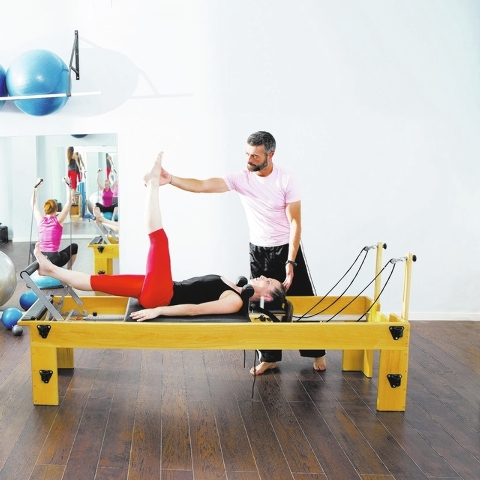Careers in complementary and alternative medicine


If you are in a group of four American adults, and you have never used at least one form of complementary or alternative medicine, chances are you’re the only one.
Americans’ use of and belief in complementary and alternative medicine have grown, as have career opportunities in that field.
What is CAM?
The National Institutes of Health defines complementary and alternative medicine as a group of diverse medical and health care systems, practices, modalities and products that are not currently considered to be part of conventional Western medicine. Practitioners take a holistic approach to patient care; that is, they see the patient as a whole person, not just a set of symptoms or a series of isolated conditions.
They’re also focused on prevention and wellness, and place a high value on the body’s natural ability to heal itself in conjunction with other natural forces. This proactive stance is a dramatic divergence from linear, interventional approaches to medicine in which most efforts are aimed at curing illness once it occurs. Many of these practices and techniques draw on long-established, even ancient, traditions.
The difference between complementary and alternative
Although the terms are often used in tandem or interchangeably, there is a difference. Complementary means “along with.” Alternative means “instead of.” So, for example, if you use yoga and blood pressure pills together to reduce hypertension, the yoga is complementary; if you use yoga to replace the drugs entirely, it is alternative.
What types of CAM are there?
According to the National Center for Complementary and Alternative Medicine, an arm of the National Institutes of Health, the practices can be divided into two main streams: natural products and mind/body practices.
Natural products include herbs (also called botanicals), vitamins and minerals, and probiotics. They are heavily marketed, readily available to users, often sold as packaged dietary supplements and can include many products sold loosely. These are diet-based therapies.
There is a wide range of mind/body practices. The prominent and most widely recognized ones are:
n yoga, which is a broad field integrating mind, body and spirit, combining physical postures and movement, breathing exercised and meditation;
n acupuncture;
n massage therapy in which practitioners manipulate the soft tissues of the body;
n meditation such as mindfulness meditation or transcendental meditation;
n movement therapies such as Pilates;
n relaxation techniques such as breathing exercises and guided imagery;
n spinal manipulation as practiced by chiropractors, osteopathic physicians, naturopathic physicians, physical therapists and some medical doctors;
n tai chi and qigong, practices from traditional Chinese medicine that combine specific movements or postures, coordinated breathing, and mental focus;
n hands-on practices such as Reiki and other energy transfers;
n other approaches such as hypnotherapy.
For more information, visit the website, www.nccam.nih.gov.
An ever-changing landscape
The list of practices is constantly changing for several reasons. One, mainstream medicine — and all its literature and news — is slow to recognize some of them. Two, growing research validates many practices and even separates some into smaller but distinct practices. And three, some are becoming so widely accepted and used that they are no longer considered by many people to be out of the mainstream.
According to the NCCAM, 40 percent of American adults look to CAM to “improve well-being, relieve symptoms, and enhance traditional care.” This is confirmed by surveys conducted by the National Center for Health Statistics at the Centers for Disease Control and Prevention. Americans’ annual CAM bill comes to $34 billion, or about $350 for every American adult who uses it.
Although that might seem small — certainly compared with overall health expenditures that topped $3 trillion last year (nine times as much as spent on CAM alone) — it is still a large and growing market, with career opportunities popping up everywhere.
CAM is here to stay
Data collected from reports in the Journal of the American Medical Association and the Wall Street Journal show that in 1977, one-third of the American population was using some form of CAM therapy, but by 2001, subsequent analyses of lifetime use demonstrated that 67 percent of those surveyed in 1977 reported continual use of at least one therapy. Further, the reports state, although “it is often difficult to project long-term trends, past utilization of CAM therapies forecast a promising future. Today, CAM has proven to be neither a short-lived social phenomenon nor a radical replacement of conventional medicine.”
There are underlying reasons for the growth. Although the wide range of complementary and alternative therapies may differ, they all seem to do five things: empower the individual to participate in and take responsibility for his or her own health; emphasize on lifestyle issues such as regular exercise, proper nutrition, sufficient rest, and emotional and spiritual balance; treat the individual as a whole person, as opposed to a collection of parts; focus on prevention and wellness; and, because of widespread access to the Internet for most Americans, fit in well with our need to take ownership of our health care decisions.
So where are the jobs?
As recently as 20 years ago, mainstream medicine in the United States paid little attention to complementary and alternative medicine and, worse, many mainstream practitioners were outwardly dismissive of it, considering it a fad, at best, but more as a danger that wasn’t understood and couldn’t be measured or regulated
Today, as a result of intense study of, deep research in and close attention to the whole field — predominantly by the National Institutes of Health and many leading colleges and medical schools — CAM has become widely accepted. What’s more it has been woven into much of the mainstream in what is called integrative medicine, the practice of combining complementary and alternative modalities with traditional biomedicine.
Consequently, you will find that, although a few decades ago CAM practitioners were on their own (and marginalized), they are now employed by medical centers, hospitals, nursing and rehabilitation centers, hospice facilities, and other mainstream establishments in the care of almost every type of patient with every kind of condition, from cancer to colitis to asthma, and for dealing with situations as varied as childbirth, depression, addiction, pain management, sleep disorders and post-traumatic stress disorders.
Demonstrating this trend, the American Hospital Association reported, in 2011, that 42 percent of hospitals in the U.S. offered at least one CAM modality, up from 37 percent in 2007, and the Defense and Veterans Affairs departments show increasing use of complementary modalities, as well. According to the VA, 89 percent of their facilities offered complementary therapies in 2011.
And how does one qualify?
As in any other field, different jobs require different qualifications such as certificates or degrees.
Certificate programs are widely available for — and are sufficient for entry into — the fields of reflexology, massage therapy, spiritual or energy healing, life coaching, yoga, Pilates, Reiki and others. These are generally short courses, many of which are available online. It is advisable to take these courses from accredited schools, whether they are two or four year colleges or technical trades schools.
You can earn degrees at a traditional (brick and mortar) campus, through distance learning or through a blended approach using both. Here are the levels:
n Associate degree (AA, AS) — This is generally a two-year course of study, usually requiring a high school diploma with prerequisites in science and math. Many of these programs will qualify you to become a technologist, health assistant, aroma or other kind of therapist, aesthetician, herbalist and even writer in the field.
n Bachelor’s degree (BA, BS) — Done full time, bachelor’s degrees are prescribed as four-year programs, but many people today cannot devote all their time to study and must take longer. In fact, more people take more than fours than those who complete school in the same span. In rarer cases, a bachelor’s degree is completed in less than four years.
In addition to traditional courses — biology, chemistry, math, health systems and so forth — many schools now include courses in herbal remedies, nutrition science, traditional Chinese medicine and homeopathy. With your BA or BS, you can qualify for jobs such as holistic health practitioners, herbalists, naturopathic health practitioners, nutrition counselors, research assistants, program coordinators and writers.
n Master’s degree (MA, MS) — Masters-level programs require at least a bachelor’s degree and develop advanced knowledge of a specific area of expertise. In addition to master’s degrees in any of the biological sciences or chemistry or other sciences, there are now Master of Sciences degrees specifically in CAM.
Aside from jobs as listed above (with associate or bachelor’s degrees), holders of Master of Sciences degrees in CAM become health care educators and practice managers, as well as higher level and higher paid practitioners and therapists. They also find positions in regulatory, legal, and administrative affairs of integrative, complementary and alternative health care.
n Doctorate degree (PhD, DAOM) — CAM doctorates include naturopathic doctor, doctor of chiropractic, doctor of acupuncture and oriental medicine, doctor of nursing practice, doctor of osteopathic medicine and doctor of philosophy. All of these programs require at least a bachelor’s degree and many require a master’s degree.
They are two- to four-year programs depending on the degree. Graduates with these doctorate degrees typically practice as chiropractic, naturopathic, or osteopathic physicians, nurse midwives, acupuncturists or even college professors.
Where’s it all going?
Depending on the studies you read and the data you access, Americans’ expenditures on complementary and alternative products and practices are growing from 4 to 10 percent per year. The market for CAM — and across-the-board career opportunities along with it — will likely double in 7½ years, a growth rate much faster than that of the U.S. economy and faster than most sectors and occupations.
What’s are the drivers?
These numbers do not even take into account several major, looming factors that will exert enormous pressure for change: the Affordable Care Act, intensified research (the NIH consistently pours $250 million into research and training each year), Americans’ total health care expenses spiraling out of control to more than $3 trillion, and difficult-to-measure changes in Americans’ attitudes toward more natural and self-directed health care practices. Real growth rates in CAM and CAM careers could very easily be double to triple what they’ve been.
Proof positive
Two recent statements in The Natural Medicine Journal put everything you’ve read above into clear and compelling terms.
1. “As the costs of health care and prescription drugs rapidly increase each year, policymakers are now focusing their attention on the cost of various therapies and providers in the face of a finite health care budget and limited health care resources.”
2.“With the increasing popularity of CAM, policymakers and insurers invested in addressing the rising cost of health care should work to ensure that implementation of the Affordable Care Act proceeds as intended (inclusive of CAM providers).”












